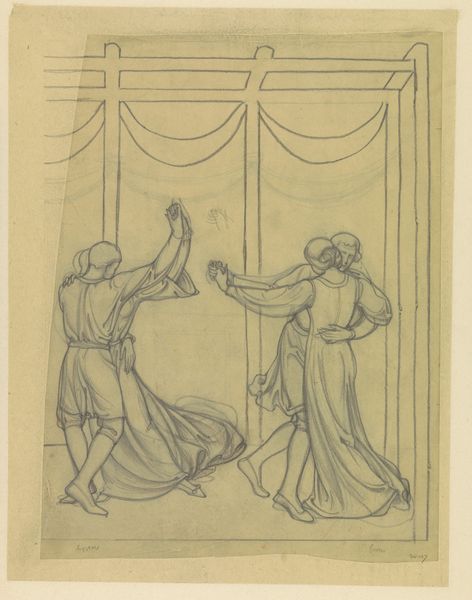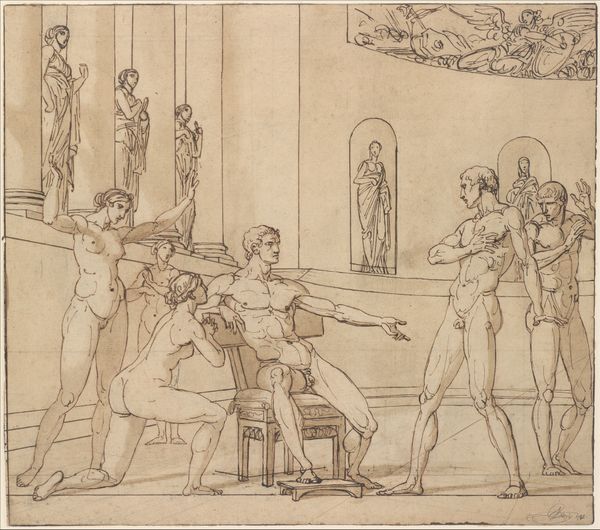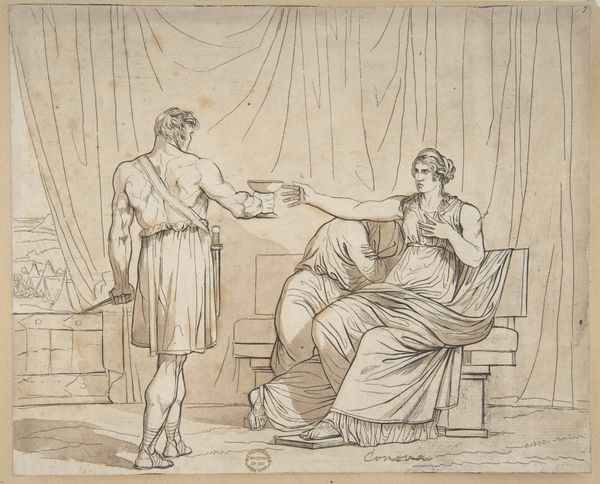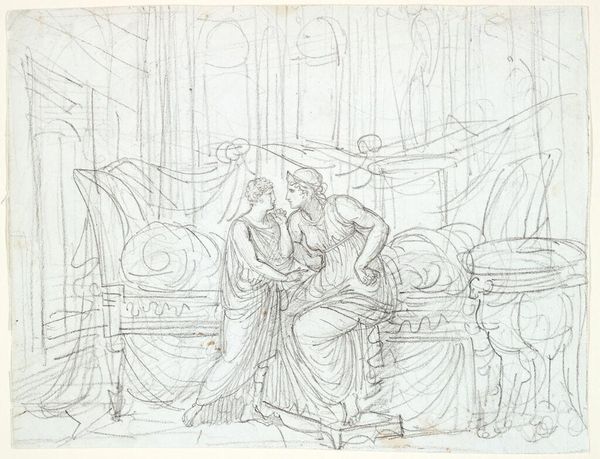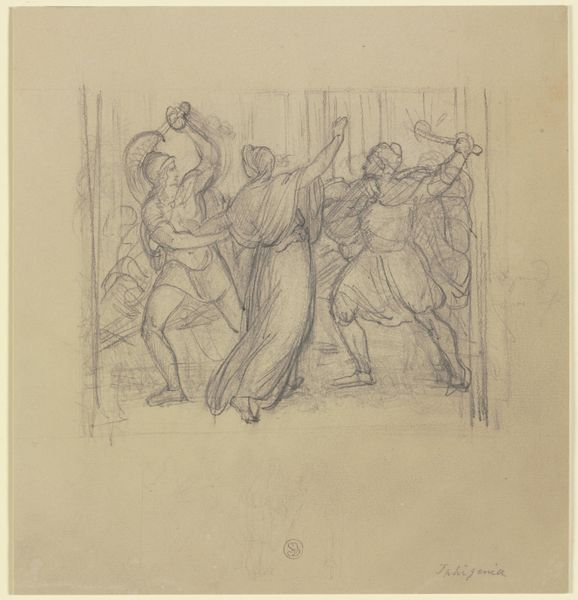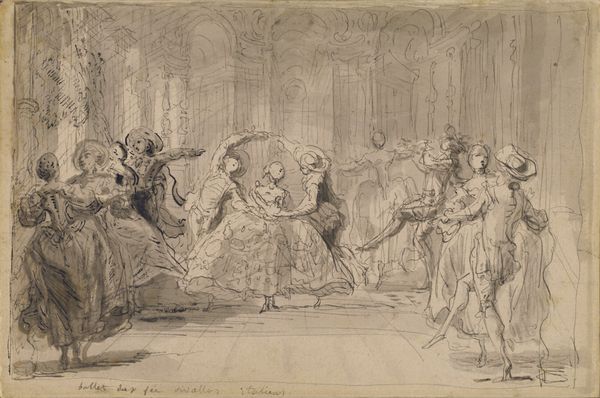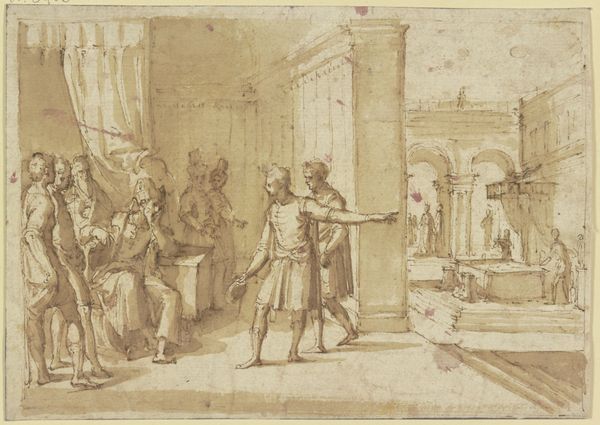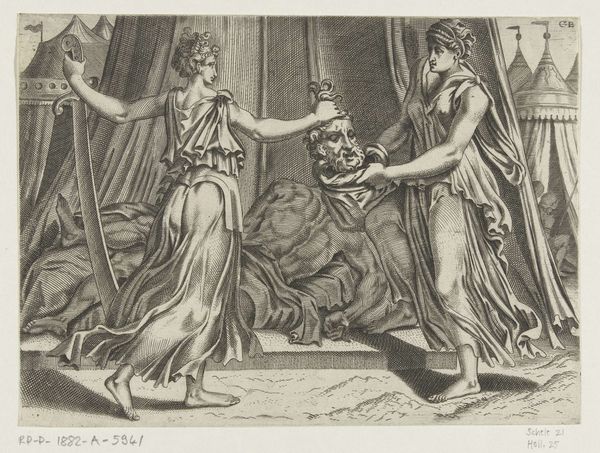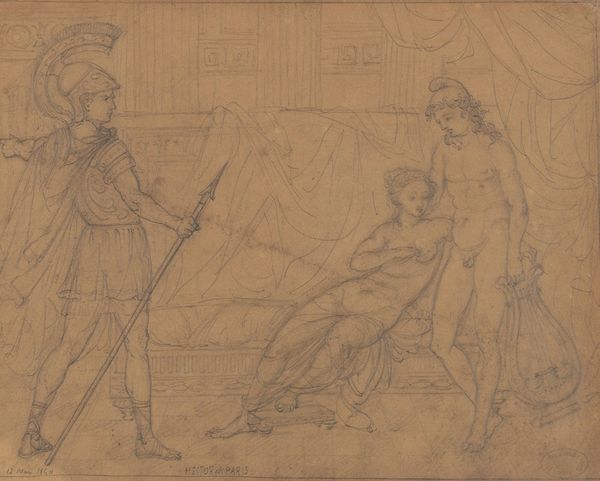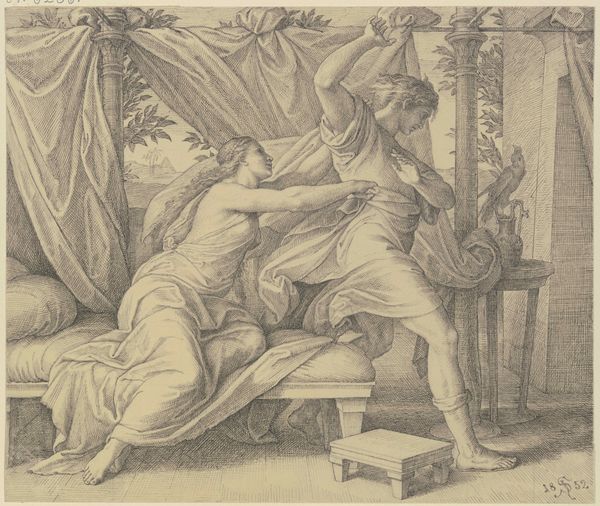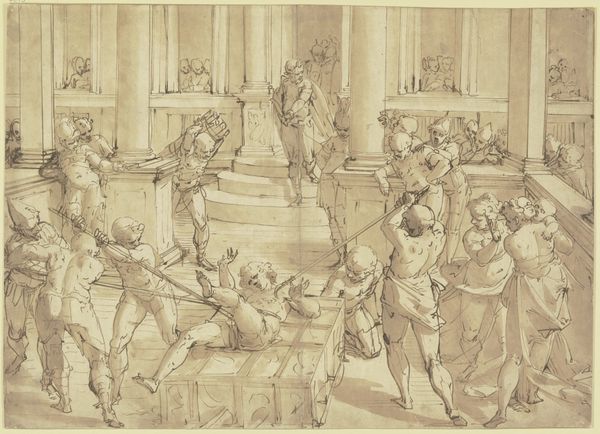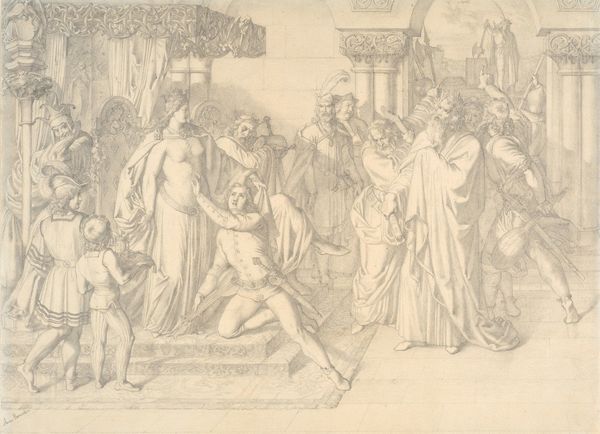
drawing, ink, pencil
#
drawing
#
figuration
#
ink
#
pencil
#
history-painting
#
academic-art
Dimensions: 13.7 x 17.8 cm
Copyright: Public domain
Curator: Here we have a drawing by Vincenzo Camuccini titled "Tarquinius and Lucretia." Executed in pencil and ink, this piece depicts a violent episode. Editor: Yes, my first impression is the dramatic contrast. The harsh lines create a real sense of tension and impending violence. The stark composition, with the looming architecture juxtaposed against the figures, heightens the unsettling mood. Curator: The artist is grappling with a pivotal moment from Roman history, a story laden with social and political implications. It represents the rape of Lucretia by Tarquinius, the son of the last king of Rome, an event that sparked a revolt and the overthrow of the monarchy. Camuccini shows us not just a crime but a flashpoint in Roman history. Editor: From a purely visual perspective, the way Camuccini uses line to define form is striking. The dynamic pose of Tarquinius, his arm raised with the knife, conveys aggression. Lucretia's stance is powerful—both cowering and standing, but even the way the drapery falls helps describe what is at stake. Curator: Right. Academic art in the early 19th century was often engaged in creating exemplary civic narratives. This piece should remind us how such images functioned, they played a part in moral education and the articulation of values. Editor: And this artistic choice elevates the emotional intensity. Note how the setting is depicted as open rather than closed or claustrophobic—perhaps indicative of that violence can appear and disrupt domestic tranquility at any point. It gives the scene a weightier emotional impact. Curator: Indeed. I appreciate how your formal analysis has further clarified how and why such pieces proved popular in Camuccini's time. It underscores that Academic art was a complex tool, as much rhetorical and political as aesthetic. Editor: Thank you, these combined points have given a clearer understanding of the construction and the intent of "Tarquinius and Lucretia."
Comments
No comments
Be the first to comment and join the conversation on the ultimate creative platform.
